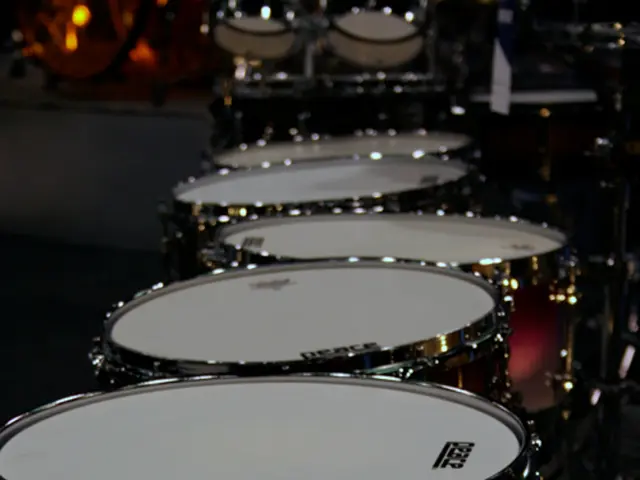Race not entirely concluded
Improved Air Quality in Düsseldorf: A Successful First Half of 2020
Düsseldorf, Germany, has seen a significant reduction in nitrogen dioxide (NO2) pollution during the first half of 2020. This positive development is primarily attributed to changes in traffic patterns and related emissions, most likely linked to COVID-19 lockdowns and restrictions that significantly reduced vehicle use.
The reduction in traffic volume, particularly car traffic, has been a key influencing factor. Lockdown measures during the early months of 2020 limited commuting and travel, directly lowering NO2 emissions from road transport, a major source in cities like Düsseldorf. This led to a noticeable drop in ambient NO2 levels.
Advanced NOx reduction technologies, such as NOx adsorbers and selective catalytic reduction (SCR) systems in diesel engines, have also contributed to the reduction trend. These technologies have improved NOx control efficiency over recent years and have seen increased implementation under stricter EU emissions regulations, including during real driving emissions (RDE) testing starting in 2017.
Meteorological factors have also played a role, but their impact has been secondary compared to the emissions changes. Seasonal weather variations affecting dispersion and chemical reactions of pollutants can influence observed NO2 levels, but the marked drop observed in early 2020 is predominantly attributed to emissions changes rather than weather.
While only one monitoring site, on Merowingerstraße, slightly exceeded the annual limit, the potential for reducing nitrogen dioxide on this street due to environmental lanes is up to 4 μg/m³. Similarly, the potential for reducing nitrogen dioxide on Prinz-Georg-Straße is up to 2 μg/m³.
The city of Düsseldorf and the North Rhine-Westphalia State Agency for Nature, Environment and Consumer Protection used their own measurements in the evaluation. In the first half of 2020, nitrogen dioxide pollution levels at most monitoring stations in Düsseldorf were within the annual limit of 41 micrograms per cubic meter of air (μg/m³).
The measures taken to contain the COVID-19 pandemic have contributed to this good result. The positive development of nitrogen dioxide pollution is also influenced by various factors, including the renewal of the Rheinbahn bus fleet, the introduction of environmental lanes, the expansion of the cycling network, and the promotion of electric mobility.
Mayor Thomas Geisel has emphasized that this is a success for the health protection of Düsseldorf's residents. Cycling, buses, and trains will continue to be promoted in Düsseldorf, and it is expected that the switch to the bicycle will be maintained permanently, as the new cyclists have learned to appreciate this form of inner-city mobility.
Continuous progress in the fleet of all vehicles driving in Düsseldorf is ongoing. Weather conditions, particularly wind patterns, also have an impact on air pollution in Düsseldorf. Despite the positive development, Düsseldorf is not yet at the goal, but on a very good path towards achieving air cleanliness. The city will continue to consistently drive forward the projects set out in the air cleanliness plan.
Many employers and employees have gained positive experiences with mobile work and home office solutions and will continue to offer such forms of work even after the pandemic. This shift towards more flexible work arrangements could further contribute to the reduction of air pollution in the future.
References: [1] European Environment Agency. (2020). Air quality in Europe - 2020 report. Retrieved from https://www.eea.europa.eu/publications/air-quality-in-europe-2020
[2] World Health Organization. (2020). Ambient (outdoor) air quality and health. Retrieved from https://www.who.int/news-room/fact-sheets/detail/ambient-(outdoor)-air-quality-and-health
- The decrease in nitrogen dioxide (NO2) pollution in Düsseldorf, Germany, during the first half of 2020 can be linked to the changes in the traffic industry, such as reduced vehicle use due to COVID-19 lockdowns and restrictions.
- Apart from the positive impact of COVID-19 measures, other factors like the advancement of NOx reduction technologies and environmental-science innovations in vehicles, the renewal of public-transit fleets, and the expansion of bike lanes have also contributed to the reduction of NO2 pollution.
- The health-and-wellness of Düsseldorf's residents has improved as a result of the drop in nitrogen dioxide pollution, with the continuation of promoting cycling, buses, and trains being an essential focus for the city.
- The successful reduction in nitrogen dioxide pollution in Düsseldorf may continue in the future with more finance-related measures such as the promotion of electric mobility, as well as improvements in transportation systems such as the implementation of flexible work arrangements.




